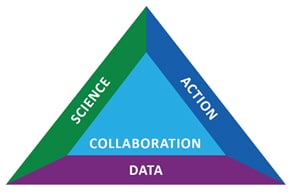To prevent suicide and address the broad range of risk and protective factors, CDC developed its comprehensive and coordinated public health approach that relies on data, science, and action, grounded in a strong foundation of collaboration.
CDC’s vision is, “No lives lost to suicide.” To reach this vision CDC’s mission is to use data, science, and partnerships to identify and implement effective suicide prevention strategies to foster healthy and resilient communities across the United States.
Highlighting Suicide Prevention during COVID-19 and National Suicide Prevention Month
Focusing on suicide prevention is especially important now, during the COVID-19 pandemic, to remain connected to each other and to be aware of the signs of suicide risk and how to respond. During times of increased social distancing, people can still maintain social connections and care for their mental health. CDC compiled information on coping with stress in healthy ways to help you, the people you care about, and your community.
NCIPC is funding national, state, territorial, local, and tribal organizations to quickly develop and disseminate resources on suicide prevention and adverse childhood experiences (ACEs) during COVID-19. NCIPC also recently released a video highlighting our partnership with the North Carolina Core State Violence and Injury Prevention Program, the University of North Carolina Injury Prevention Research Center, and Appalachian State University on the Counseling on Access to Lethal Means (CALM) initiative.
We can each do our part to help prevent suicide. Read CDC’s Feature to learn more about how you can #BeThe1To help prevent suicide, or visit CDC’s website on Suicide Prevention. States and communities can use CDC’s Preventing Suicide: A Technical Package of Policies, Programs, and Practices to identify strategies and approaches with the best available evidence to prevent suicide.























.png)











No hay comentarios:
Publicar un comentario